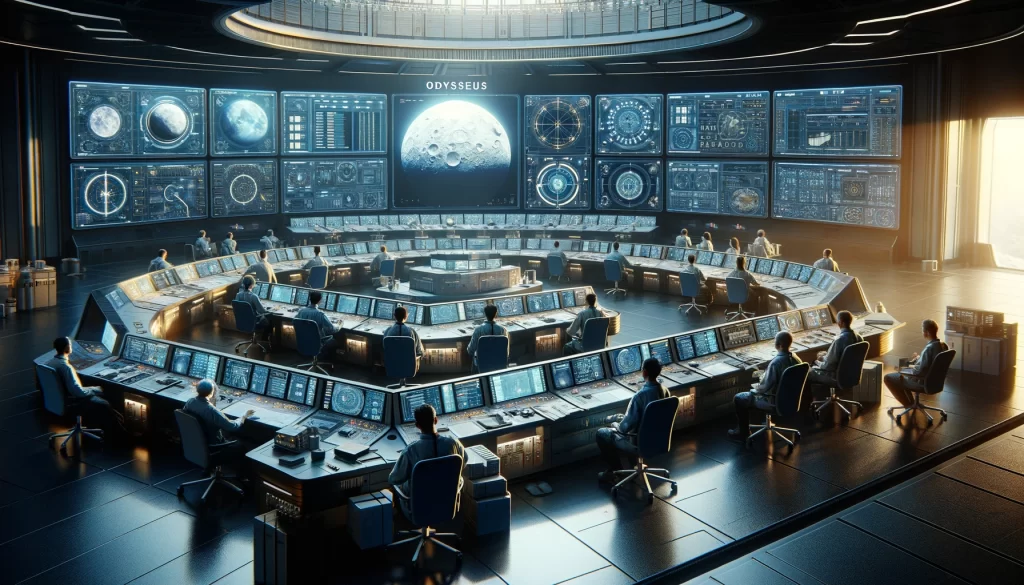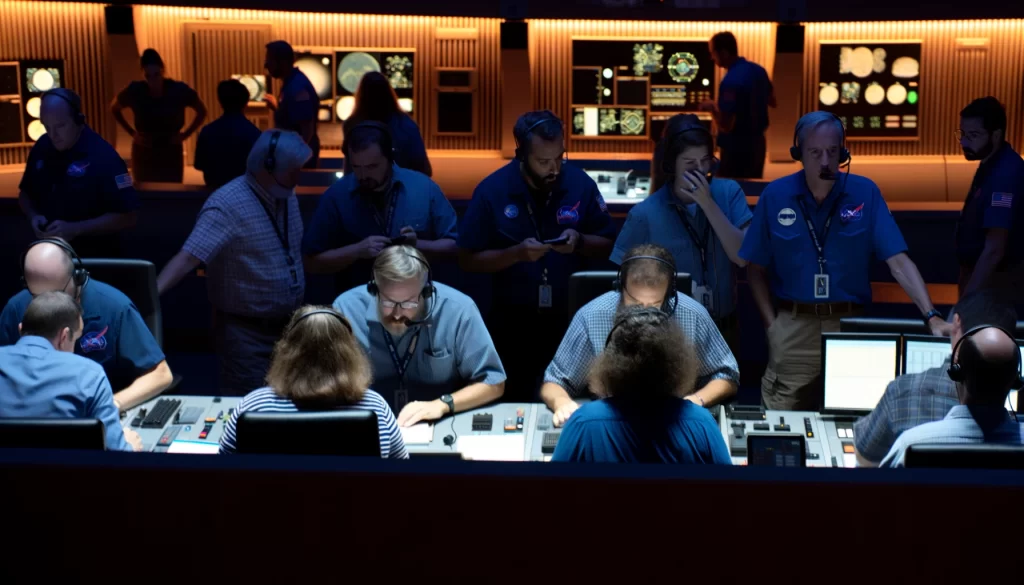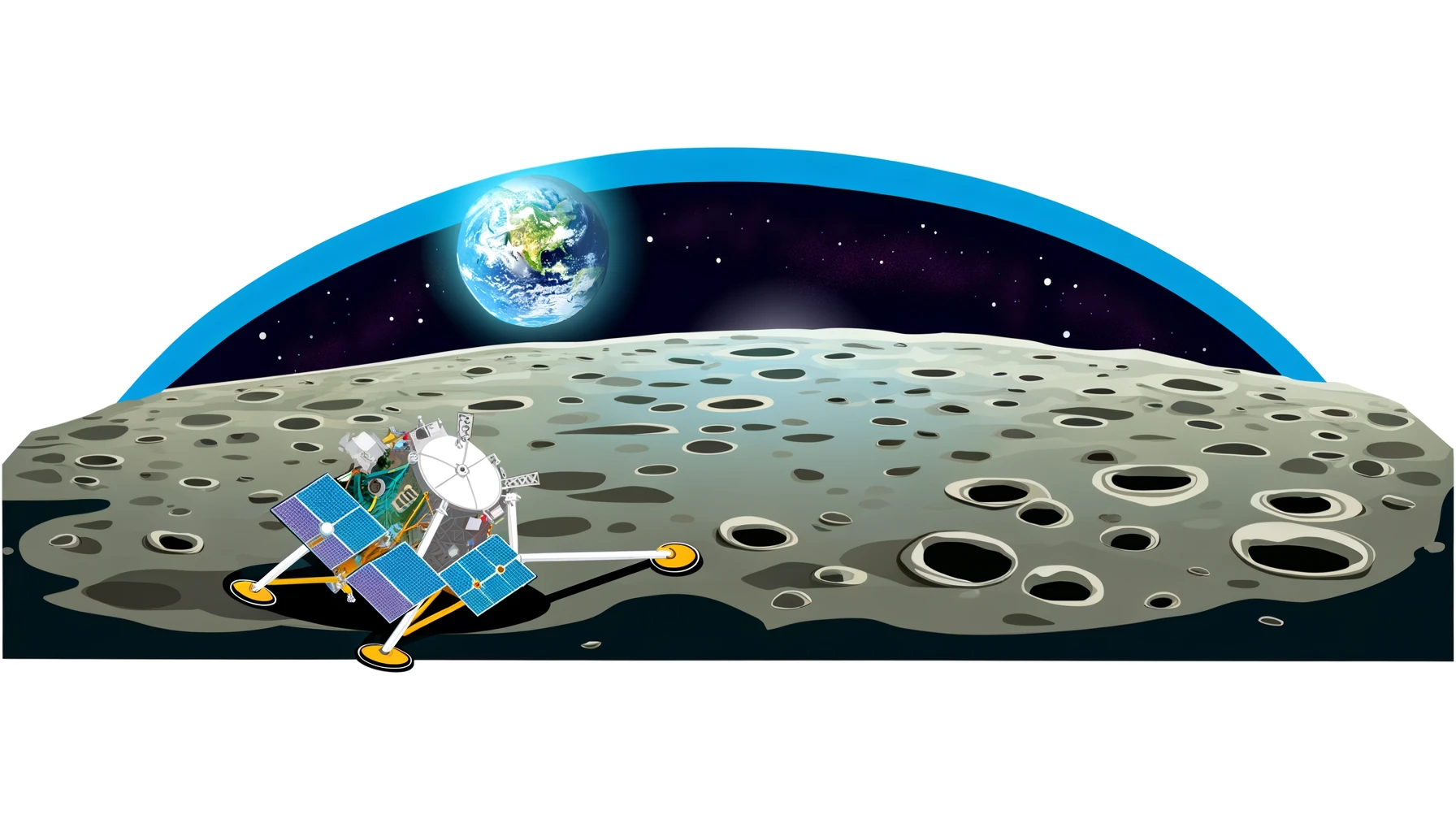In a groundbreaking achievement that harks back to the legendary Apollo missions of the 20th century, an American-built spacecraft named Odysseus has made a historic touchdown on the moon. This event marks the first time in over 50 years that a spacecraft from the United States has managed to land on the lunar surface, specifically targeting the moon’s south pole region. The last such mission was Apollo 17 in 1972, making Odysseus’s journey a significant milestone in space exploration.
The company behind this feat, Intuitive Machines, shared the news of Odysseus’s condition the day after its successful landing. Despite the spacecraft toppling over upon touchdown, it remains in good condition, sparking excitement and a bit of relief among the team. Steve Altemus, the chief executive of Intuitive Machines, expressed his satisfaction during a NASA news conference, stating, “The vehicle is stable near or at our intended landing site. We do have communications with the lander.” He emphasized the importance of this achievement by adding, “That’s phenomenal to begin with.”

However, the mission faced its share of challenges. The unexpected tumble affected the spacecraft’s antennas, limiting communication capabilities and preventing the transmission of photographs since the landing. The only image shared was captured during the descent, revealing the challenging terrain of the moon’s surface.
The path to landing was fraught with technical difficulties and unforeseen glitches. Initially, Odysseus was supposed to enter a circular orbit around the moon, but trajectory inaccuracies led to an elliptical orbit instead. Further complications arose when it was discovered that the laser range finders, crucial for measuring the spacecraft’s altitude during its descent, were inoperable due to safety switches being left on. This oversight nearly doomed the mission, as there was no way to manually flip the switches from Earth.
In a twist of fate, an experimental instrument aboard Odysseus, the Navigation Doppler Lidar, came to the rescue. This sophisticated device, equipped with three laser beams, was able to provide the necessary altitude and velocity measurements for a safe landing. The swift adaptation of the spacecraft’s software to integrate this instrument’s readings was a testament to the ingenuity and quick thinking of the engineers at Intuitive Machines.

The mission’s success was not just a result of technological prowess but also serendipity. The initial incorrect orbit allowed the team extra time to identify and resolve the issue with the range finders, averting what could have been a catastrophic end to the mission. Despite these hurdles, Odysseus encountered a final challenge during touchdown, landing faster and at an angle that caused it to tip over, a fate similar to a Japanese spacecraft that had landed on the moon earlier.
As Intuitive Machines continues to work on enhancing communications and determining what scientific tasks can still be accomplished, the mission’s legacy is already taking shape. Among the potential scientific contributions is a small camera system developed by students, which, although not deployed as planned, may still capture photographs of the lunar surface.
The Odysseus mission, while likely to conclude within the next week due to the movement of the sun beyond its solar arrays, represents a monumental step forward in lunar exploration. Even as the spacecraft faces the harsh lunar night, the hope remains that it may revive with the next sunrise, offering more insights into our closest celestial neighbor. This mission encapsulates the spirit of exploration and innovation, demonstrating that even in the face of adversity, human ingenuity can pave the way to new frontiers.
This article is based on the following article:

Background Information
Understanding these basic concepts will help make sense of the challenges and achievements described in the article about the Odysseus spacecraft’s mission to the moon.
1. Spacecraft and Space Exploration: A spacecraft is a vehicle designed for travel or operation in outer space. Space exploration involves using astronomy and space technology to explore outer space. It has allowed humans to learn much about the planets, stars, and other objects in the universe. The United States has been a leader in space exploration, with NASA (National Aeronautics and Space Administration) being the federal agency responsible for the nation’s civilian space program.
2. The Moon: The moon is Earth’s only natural satellite and the fifth largest moon in the Solar System. It’s about a quarter the size of Earth and is approximately 238,855 miles (384,400 kilometers) away. The moon’s surface features plains, craters, and mountains. Its gravitational influence is the main driver of Earth’s tides.
3. Apollo Missions: The Apollo program was a series of space missions conducted by NASA between 1961 and 1972 aimed at landing humans on the moon and bringing them safely back to Earth. Apollo 17, mentioned in the article, was the last manned mission to the moon, which took place in December 1972.
4. Lunar South Pole: The lunar south pole region is of particular interest to scientists because of the potential presence of water ice in permanently shadowed craters. Water is essential for life support and could be used to produce fuel for further space exploration.
5. Orbits: When a spacecraft orbits a celestial body, it is in a path around that body. A circular orbit is an orbit that has a circular path, while an elliptical orbit has an elongated path, shaped like an oval. The orbit’s shape affects how the spacecraft moves and its position relative to the body it’s orbiting.
6. Communication with Earth: Spacecraft communicate with Earth using antennas that transmit data across space. If a spacecraft’s antenna is not correctly aligned with Earth, communication can be limited, affecting the mission’s ability to send and receive information.
7. Instruments and Technology: Modern spacecraft are equipped with various instruments and technologies to navigate, communicate, and carry out their missions. These can include cameras, laser range finders (to measure distance), and sophisticated instruments like the Navigation Doppler Lidar, which measures both the spacecraft’s altitude and velocity using laser beams.
Please subscribe to Insight Fortnight, our biweekly newsletter!
